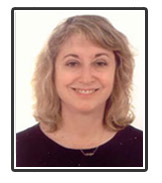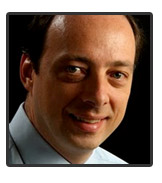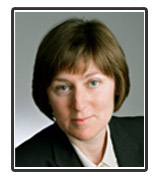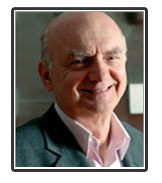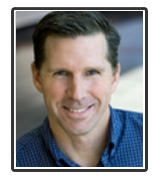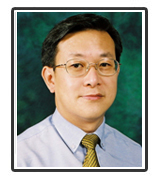

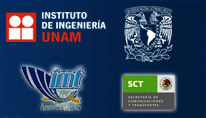

| General Program | |
| Keynote Lectures | |
| Invited Speakers | |
| SHM Short Course | |
| Social Program |
![]()
Deadline Dates |
|
Keynote Lectures
Keynote Lectures are to be presented by world authorities in SHMII especially invited by the Organizing Committee. Six Keynote Lectures will be presented during the conference:
Carmen Andrade
Research Professor of the National Research Council of Spain (CSIC) at the Institute of Construction Science "Eduardo Torroja" (IETcc), and Advisor to the Secretary General of Universities of the Ministry of Education.She has worked as a scientist studying of the durability of buildings, with particular attention at the phenomenon of corrosion of steel in reinforced concrete. She is author of numerous publications and has several national and international patents. She supervised 20 doctoral theses. She has been Director of the Institute of Construction Sciences Eduardo Torroja (CSIC) for more than 10 years, she has participated in Standardization committees and has been Chairwoman of several international organizations related to the specialty (UEAtc, RILEM, WFTAO and Liaison Committee which brings together associations: CIB, FIB, IABSE, IASS, RILEM and ECCE). Also she has been Chairwoman and Vice-chairwoman of a sectorial program of CYTED. She has received several international awards and recognitions for her research work and training. In 2003, she was appointed Doctor Honoris Causa by the University of Trondheim, Norway and in 2006 by the University of Alicante. She is the Principal Researcher of the Project SEDUREC in the Program Consolider Ingenio 2010. She has been General Director of Technological Policy of the Ministry of Education and Science and at present she is the Advisor to the Secretary General of Universities of the Ministry of Education.
Interpretation of Corrosion Monitoring from Embedded Sensors
Reinforcement corrosion induces several structural damages which affect the serviceability and the safety of concrete structures. The use of sensors can help to control and optimize the life cycle and indicate the best time to undertake repair at the lower cost. Monitoring by embedded electrodes and probes is not a new technology as there are an increasing number of concrete structures that are being monitored. However, results are scarce on the interpretation of the values obtained due the difficulty to link them to the climatic changes in temperature and humidity. On the parameters to be monitored and evaluated, temperature and corrosion potential are the most common although there are other which are also very important regarding the prediction of future durability. Thus, strains, concrete resistivity (liquid water content) and corrosion rate seems also necessary to be monitored if accurate predictions are necessary.
In present paper, several examples of records of the above mentioned techniques are presented, together with a methodology to obtain a Representative value of the parameter studied, averaged per year. In the case of the corrosion rate this value is obtained from the calculation of the accumulated corrosion penetration depth which can be introduced into structural models to calculate the loss in load bearing capacity. The results obtained allow correlating corrosion and environmental parameters and make predictions which could be used to benchmark whether and when a repair would be necessary.... ...
Daniele Inaudi
Chief Technology Officer Roctest Group.Dr. Daniele Inaudi received a degree in Physics at the Swiss Federal Institute of Technology in Zurich (ETHZ) where his graduation work was prized with the ETHZ medal. In 1997 he obtained his Ph.D. in civil engineering at the Laboratory of Stress Analysis (IMAC) of the Swiss Federal Institute of Technology in Lausanne for his work on the development of a fiber optic deformation sensing system for civil engineering structural monitoring. In 2005 he received a Master in Business Administration form the University of Southern Switzerland. Daniele Inaudi is co-founder and CTO of SMARTEC SA and CTO of Roctest. He is fellow and member of the executive committee of ISHMII and is an active member of IABMAS, OSA, SPIE, IABSE and fib. Daniele Inaudi is author of more than 200 papers, five book chapters, a book on "Fiber Optic Methods for Structural Health Monitoring" and editor of a book on Optical Nondestructive Testing.
Cost-Benefits Analysis in SHM Projects
Structural health monitoring (SHM) is a process that provides accurate and real-time information concerning structural condition and performance. Requirements for structural health monitoring in the last few decades have rapidly increased, and these requirements have stimulated many new developments of various sensing technologies. Having passed the stage of scientific or technical curiosity, SHM is now entering its adulthood and needs to demonstrate that it can earn its own money. Owners and engineers are no longer satisfied with general benefits of SHM such as “reducing risk”, “improve knowledge” or “verify hypotheses” but need to justify from an economic point of view the cost-effectiveness of an SHM system.
Our experience in commercially proposing SHM system has allowed us to identify several scenarios where immediate or longer-term cost savings that exceed the SHM system cost can be achieved and demonstrated.
In this presentation, we will develop three such scenarios:
- Supervised lifetime extension of bridges, which are candidate for replacement
- SHM during new bridge construction and early life
- Risk management on new geotechnical constructions
Each scenario will be illustrated by an application example taken form practice.... ...
Katerina Krebber
BAM Federal Institute for Materials Research and Testing, BerlinDr. Katerina Krebber studied Physics and received a PhD degree in electrical engineering. She has more than 17 years experience with the development of fiber optic sensors including distributed fiber optic sensors, fiber optic radiation sensor and polymer optical fiber sensors. Since 2004 she has been with BAM Federal Institute for Materials Research and Testing, Berlin. At BAM she is head of the working group “Distributed and Polymer Optical Fiber Sensors” and leader of a number of RTD projects. She is an author and a co-author of more than 70 scientific publications including invited talks at international conferences and patents.
Structural Health Monitoring by Smart Technical Textiles based on Fiber Optic Sensors Technical textiles with embedded distributed fiber optic sensors have been developed for the purposes of structural health monitoring in geotechnical and civil engineering. The distributed fiber optic sensors are based on Brillouin scattering in silica optical fibers and OTDR in polymer optical fibers. Such “smart” technical textiles can be used for reinforcement of geotechnical and masonry structures and the embedded fiber optic sensors can provide information about the condition of the structures and detect the presence of any damages and destructions in real time. Thus, structural health monitoring of critical geotechnical and civil infrastructures can be realized. The lecture highlights the results achieved in this innovative field in the framework of several German and European projects.
... ...
Roberto Meli
Emeritus Professor at the Instituto de Ingeniería, UNAMHe graduated as a Civil Engineer from the National University of Mexico, where he also obtained the degree of Doctor of Engineering, in structures. He has been a professor since 1967 at the same university, where he has been declared Emeritus. He has been visiting professor at the University of Texas at Austin and at the Technical University of Milan. He has lectured intensively, especially in Mexico and other Latin American countries.
His research activity has dealt with different topics of the structural behaviour of buildings, mainly regarding the effects of earthquakes on concrete and masonry structures. He has published more than 160 technical papers and four books.
After the 1985 Mexico earthquake he headed the group in charge of the evaluation of its effects on buildings and of extracting the lessons for updating the practice of earthquake-resistant design. He coordinated the US-Mexico research program on learning from the Mexico earthquake. He has been responsible for the drafting of several building codes and design norms, in Mexico and abroad.
He has kept a continuous and intense activity on research and consulting on structural safety and rehabilitation of historic buildings, being member of the National Council on Monuments in Mexico and of the International Scientific Council on Analysis and Rehabilitation of Architectural Heritage (ISCARSAH-ICOMOS). In 1998 he published a book on Structural Engineering of Historical Buildings, which has been widely used by specialists and students on the subject, in Mexico and other countries.Research and Practice on Structural Health Evaluation of Ancient Stone Masonry Buildings in Mexico
Structural safety of ancient stone masonry buildings is severely jeopardized in most parts of Mexico by earthquakes and by ground subsidence. Situation is particularly severe in Mexico City, where subsidence has been aggravated by excessive extraction of underground water and, despite of frequent rehabilitations, cumulative damage caused by differential settlements through the centuries has led many of these structures to a critical situation. Innovative techniques have been implemented for the structural health evaluation of the large stock of historic buildings existing in the country, as well as for correcting the trend of their differential settlements, and for improving their structural behavior. Several important buildings of this kind have been studied and evaluated in recent times, and most of them have undergone large rehabilitation programs. The case of the Mexico City Cathedral, the National Palace, and 12 colonial buildings owned by UNAM, in the Mexico City historic center, will be briefly discussed in this presentation.
Techniques used for monitoring these structures include real time appraisal of the settlements and of the deformation through automatic networks of transducers measuring settlements, tilting, span opening and, as well as networks of strong motion transducers for measuring dynamic response in critical parts of the structure under actual earthquakes, or for determining the most significant dynamic parameters through ambient vibration test. Non-destructive or lightly destructive techniques for exploring the inner state of the structural members, and their evolution in time will be briefly dealt with. Particular attention will be given due to the structural monitoring during rehabilitation programs in order to follow the response at different steps of the intervention, in order to adjust the program for achieving the desired results.
... ...
David Potter
Principal Market Development Manager for Structural and Physical Test with National InstrumentsOut of the Lab, into the Field: Integrating Modern SHM Systems on Real-World Structures
While innovations in novel sensing technologies and damage detection methodologies continue to evolve at a rapid pace, infrastructure managers are demanding complete, integrated systems that are robust, scalable, and cost-effective. Experiences of real-world field deployments illustrate that meeting these needs involve addressing several key challenges when deploying reliable and successful SHM systems. These include integration of multiple types of sensors and instrumentation, reliable operation under harsh operating conditions, sensor cabling, distributed timing and synchronization, remote connectivity, and data management. Additionally, the growing complexity of these modern systems require robust software architectures that can support the high levels of customization that is needed for infrastructure SHM systems.
... ...
Hwayaw Tam
Director of Photonics Research Centre, Department of Electrical Engineering.
The Hong Kong Polytechnic University, Hung Hom, Kowloon, Hong Kong SARHwayawTam, received the B.Sc. degree in 1985 and the Ph.D. in 1990 in Electrical and Electronic Engineering, both from The University of Manchester, UK. From 1989 to 1993 he was with Hirst Research Center, GEC-Marconi Ltd. in the UK, working on wavelength-division multiplexing components and systems, and optical fiber amplifiers. His invention in low-loss fusion splicing technique for optical fibre amplifiers in 1990 is being adopted in most commercial fusion splicers. In 1992, he also worked as a consultant to Marconi Italiana, Genoa, Italy for the development of 980-nm pumped, low-noise erbium-doped fibre amplifiers.
Prof. Tam joined The Hong Kong Polytechnic in 1993 and is currently a Chair Professor of Photonics at the Department of Electrical Engineering and Director of the Photonic Research Centre at The Hong Kong Polytechnic University. Prof. Tam established several state-of-the-art research facilities at PolyU, including two fibre drawing towers for fabrication of photonics crystal fibres and polymer optical fibres, an ultra high-speed communication laboratory, and several laser platforms for the fabrication of advanced fibre gratings. His current research interests include fabrication of special optical silica fibres and polymer fibres, fibre gratings, fibre amplifiers, optical fibre communications and fibre sensor systems based on fibre Bragg gratings and photonic crystal fibres. Since 1993, Prof. Tam’s research group has secured over HK$ 100 million of research funding. He has published over 450 technical papers, and awarded/applied about 20 patents. Prof. Tam is a regular invited speaker at major international conferences. Many of his inventions won international awards. He also has many R&D and industrial projects collaborating with local and overseas partners. His team designed and installed many FBG sensing systems which include several condition-monitoring systems, over 1,000 FBG sensors, for the railway industry, and a structural health monitoring system that comprised of more than 200 FBG sensors for the world’s tallest 610-m Canton Tower in Guangzhou, China. Currently, Prof. Tam’s group is working on several FBG-sensor network projects for railway systems around the world, and a SHM system consisting of more than 400 FBG sensors for a 72-storey building in Seoul, Korea.
The Amazing Versatility of Fibre Bragg Grating Sensors for Infrastructure Monitoring
Fiber Bragg grating (FBG) sensing technology has been attracting substantial academic and industrial interests for the last decade due to the simplicity as well as the versatility of the fiber Bragg grating itself. FBG sensors are unique from other types of fiber-optic sensors as the measured information is wavelength-encoded, which provides self-referencing and renders their signals less susceptible to intensity fluctuations. FBGs are very versatile as transducers based on FBGs can be designed to measure a wide range of parameters such as acceleration, inclination, pressure and wind speed. In addition, FBGs are reflective sensors that can be interrogated from either end, providing redundancy to FBG sensing networks which is particularly important for infrastructures where safety and reliability are major concerns. The massively multiplexing capability of FBG sensors using a single interrogator to deal with 100’s of FBG sensors, measuring a multitude of parameters at different locations spanning over large distances (100’s of km), render such sensing technology extremely attractive for large infrastructure monitoring. The use of FBG sensing in structural health monitoring of bridges, tall buildings and condition/health monitoring of railway systems will be described in the talk. The potential use and benefits of the technology in other important applications such as wind turbine monitoring will also be discussed. These studies demonstrated the superiority of FBG sensors over conventional sensors in many crucial aspects. However, major barriers, such as lack of proprietary and custom specifications, packaging and reliability standards, insufficient field experience, have yet to be resolved before major operators are to embrace the FBG sensor technology.
... ...
